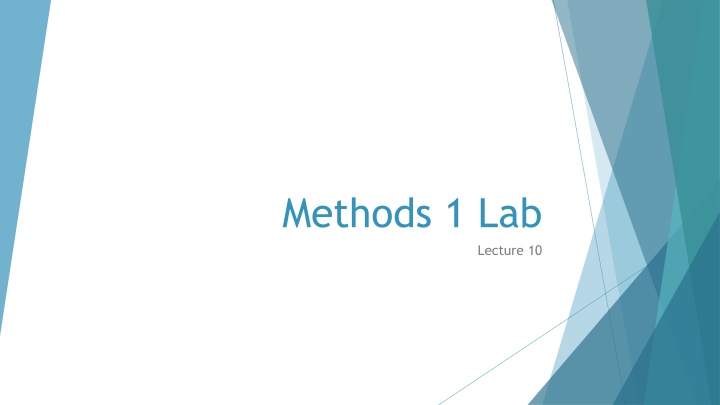
Advanced Statistical Analysis Techniques in SPSS for Research Studies
Explore advanced statistical analysis methods using SPSS software for research studies. Learn how to create 2x2 tables, calculate relative risk and odds ratios, conduct Pearson's Chi-Square and Fisher's Exact tests, and analyze CMH odds ratios in SPSS with detailed exercises and examples.
Download Presentation

Please find below an Image/Link to download the presentation.
The content on the website is provided AS IS for your information and personal use only. It may not be sold, licensed, or shared on other websites without obtaining consent from the author. If you encounter any issues during the download, it is possible that the publisher has removed the file from their server.
You are allowed to download the files provided on this website for personal or commercial use, subject to the condition that they are used lawfully. All files are the property of their respective owners.
The content on the website is provided AS IS for your information and personal use only. It may not be sold, licensed, or shared on other websites without obtaining consent from the author.
E N D
Presentation Transcript
Methods 1 Lab Lecture 10
2x2 Tables in SPSS 2x2 tables are useful for calculating: Conditional Probabilities e.g. PPV, NPV, Bayes Rule Relative Risk Odds Ratios Example 2x2 table The lung cancer and EGFR mutation example
2x2 Table in SPSS - Exercise Find the relative risk of EGFR mutant given TTF-1 being positive Open a new data window File -> New -> Data Enter lung cancer and EGFR mutation example into SPSS
2x2 Tables in SPSS - Exercise First, we must select which of the 3 variables in SPSS contains the counts Data Weight Cases Select Weight Cases By Select count variable Second, we can Compute the 2x2 and calculate the relative risk or odds ratio. Analyze Descriptive Statistics Crosstabs Select TTF1 as the Row(s) Select EGFR as the Column(s) Click on Statistics Select Risk Continue Ok
Pearsons 2and Fishers Exact Pearson s Chi-Square Test Requires expected cell counts to be at least 5 Fisher s Exact Test The expected cell counts can be small (less than 5) In SPSS, the Pearson s Chi-Square and Fisher s Exact Tests are computed almost exactly the same as computing relative risks and odds ratios
Pearsons 2and Fishers Exact - Exercise Please enter the following data into SPSS
Pearsons 2and Fishers Exact - Exercise Prepare to do an analysis by identifying Counts as a weight variable Data Weight Cases Weight cases by : Counts
Pearsons 2and Fishers Exact - Exercise Perform a 2test and a 2trend test Analyze Descriptive Statistics Crosstabs Row(s) : AgeCat Column(s): Edu Statistics Chi-square = check For a Fisher s exact, select Exact button and choose Exact
CMH Odds Ratios Enter this data in SPSS: Gender > 1 = Female, 0 = Male Outcome-> 1 = Heart Attack, 0 = No Heart Attack Disease -> 1 = Diabetes, 0 = No Diabetes Weight the Data by the counts
CMH Odds Ratios Analyze Descriptive Statistics Crosstabs Row(s) : Outcome Column(s): Disease Layer 1 of 1: Gender Statistics Cochran s and Mantel-Haenzel Statistics = check Risk = Check Continue & Ok
McNemars Test McNemar s test is used for paired data Hypotheses: H0: OR = 1 H1: OR 1 Test Statistic: | 1) + 2 (| b c b c = 2 X 1
McNemars Test - Exercise Matched case control study Use McNemar s test to determine if there is an association between sweeteners and bladder cancer. Enter data into SPSS
McNemars Test - Exercise First, we must select which of the 3 variables in SPSS contains the counts Data Weight Cases Select Weight Cases By & Select count variable Second, we can conduct McNemar s test Analyze Nonparametrics Legacy Dialogs 2 Related Samples Select cases and control variables as Variable1 and Variable2 Select McNemar & Select OK
McNemars Test - Exercise Is there an association between sweeteners and bladder cancer?






















